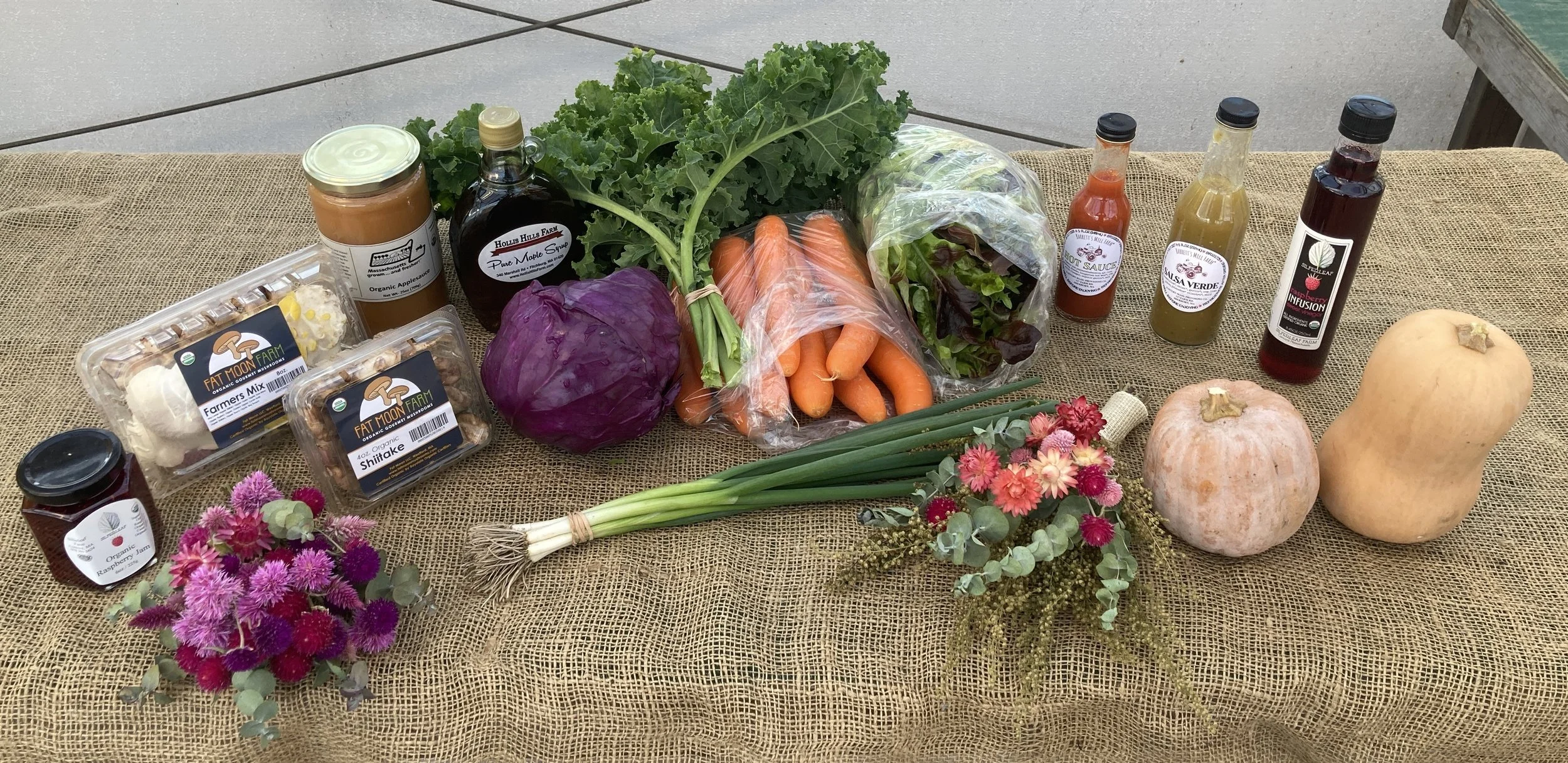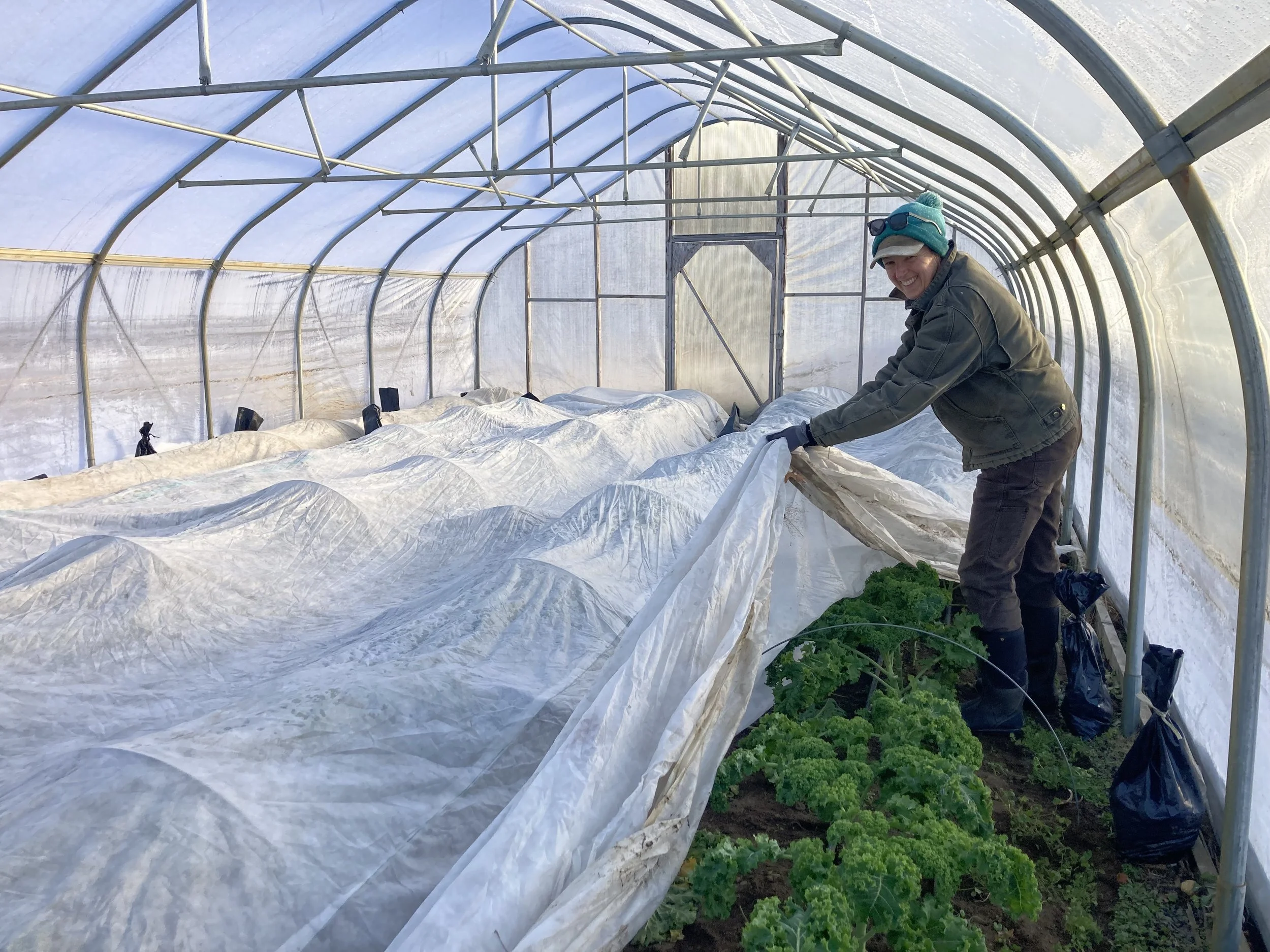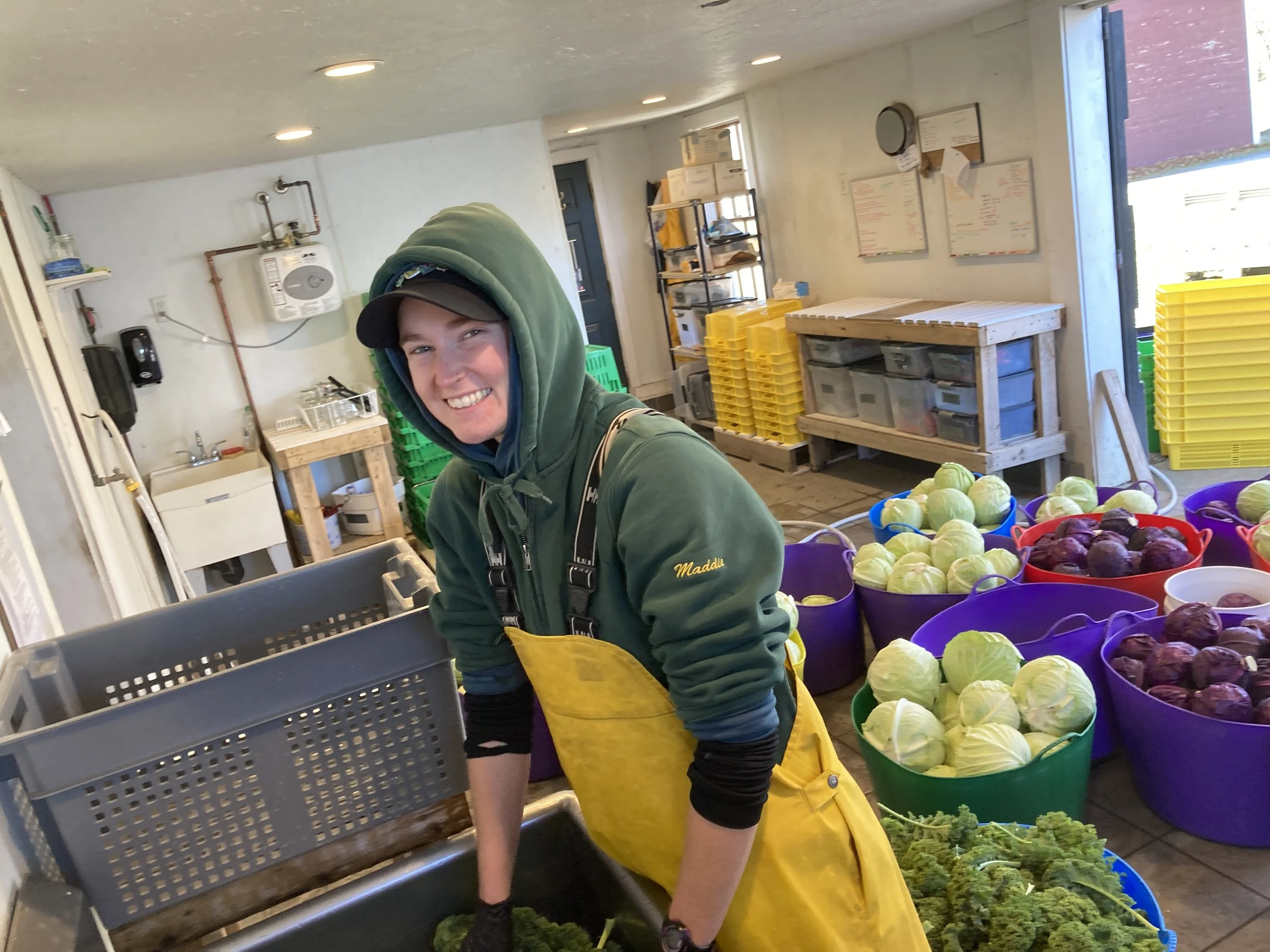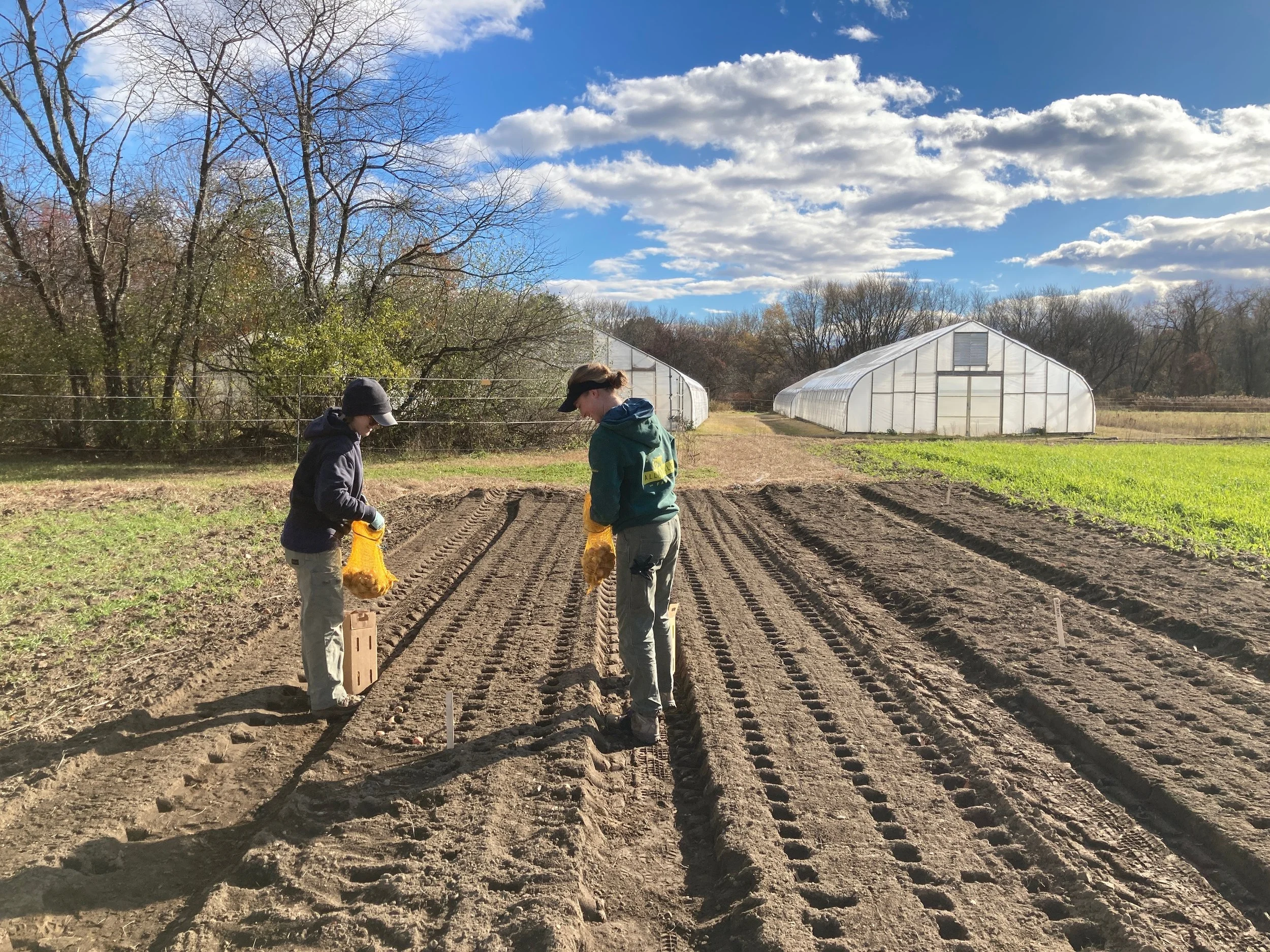Our December pop-up sale is tomorrow, Saturday, December 13th from 10am-Noon! The pop-up will be in the greenhouse attached to the farm stand. We hope to see you there!
Available Saturday 10am-Noon:
All items grown here and certified organic unless otherwise noted.
Salanova lettuce mix - From our high tunnel
Curly Kale- From our high tunnel
Scallions - From our high tunnel
Carrots - The last of our own as well as larger quantities from Winter Moon Roots in Hadley, MA. Certified Organic.
Butternut squash
Autumn Frost squash (a variety of butternut that is extra sweet!)
Pie pumpkins
Cabbage - red and green storage cabbage
Purple top turnips
Watermelon Radishes
Daikon radishes
Fat Moon Mushrooms - 8oz. Farmer’s Mix and 4oz. shiitake. Westford, MA. Certified Organic. This is sadly the last time we will have Fat Moon Mushrooms, as Farmer Elizabeth is closing her farm.
Apples- Honeycrisp variety from Bolton Orchards in Bolton, MA. Not organic.
Dried flower hangings - Door/wall hangings made of our own dried flowers including sweet Annie, eucalyptus, strawflower and gomphrena!
Salsa Verde - Made by Kenneth at Eastern Mass Provision from our own organic tomatillos, onions, garlic, jalapeños and cilantro. Mild.
Hot Sauce - Made by Kenneth at Eastern Mass Provision from our own organic habañeros, aji rico, fresno, cayenne, Hungarian hot wax and garlic. Hot.
Maple syrup - New! 12 oz. bottles from our friend Jim at Hollis Hills Farm in Fitchburg, MA. Not Organic.
Baer’s Best Beans - Black Turtle, Italian Cranberry, and Cannellini are certified organic. Black Coco and Bumblebee are not organic. All grown by Charley Baer in South Berwick, ME.
Raspberry Jam and Raspberry Vinegar Infusion - Both from Silferleaf Farm in Concord, MA. Certified Organic.
Applesauce from Long Run Produce in Boxborough, MA. Certified Organic.
Roasted Squash and Kale Salad
Adapted from a recipe by Ali Slagle, NY Times Cooking
Ingredients
1½ pounds butternut squash, cut into ¾-inch pieces (about 6 cups, no need to peel)
3 thick-cut bacon strips, cut into 1-inch pieces (optional)
3 tablespoons extra-virgin olive oil
Salt and black pepper
⅓ cup pecans
2 tablespoons maple syrup
3 tablespoons red wine vinegar
1½ tablespoons Dijon mustard
2 bunches kale (about 1 pound)
3 scallions, thinly sliced
¼ cup crumbled blue cheese or feta cheese
Preparation
Heat the oven to 400 degrees. On a sheet pan, toss the squash and bacon with 1 tablespoon olive oil and a sprinkle of salt and pepper (if not using bacon, use another tablespoon or two of oil). Spread into an even layer. Roast for 25 minutes.
Meanwhile, in a small bowl, toss the pecans with ½ tablespoon maple syrup and season with salt and pepper. When the squash has roasted for 25 minutes, top with the pecans and roast until the squash is golden and tender and the bacon is crisp, another 5 to 10 minutes. Set aside to cool slightly.
While the squash is roasting, in a large bowl, stir together the vinegar, mustard, remaining 1½ tablespoons maple syrup and remaining 2 tablespoons oil. Strip the kale leaves from their stems, then rip the leaves into bite-size pieces and add to the bowl of dressing. (Compost the stems.) Toss with your hands until well coated in dressing. Set aside.
Once the squash has cooled slightly, scrape everything from the sheet pan, including some of the bacon fat, into the large bowl. Toss gently to combine, then top with the scallions and cheese. Season to taste with salt and pepper.
Noodle Okonomiyaki (Cabbage and Egg Pancakes)
By Hetty Lui McKinnon, from NY Times Cooking
Ingredients
2 (3-ounce) instant-ramen noodle packages (seasoning packets discarded)
Boiled water
8 large eggs
4 teaspoons soy sauce or tamari
4 teaspoons toasted sesame oil
4 scallions, thinly sliced
Salt and pepper (preferably white pepper)
½ medium green, red or savoy cabbage (1¼ to 1½ pounds), halved, core removed and thinly sliced crosswise
Vegetable or sunflower oil
Sriracha, for serving
Mayonnaise, for serving
White sesame seeds, for serving
Preparation
Place the instant noodles into a large, heatproof bowl, top with about 6 cups just-boiled water, and soak for 7 to 8 minutes.
Meanwhile, place the eggs into a large bowl and whisk to combine. Add the soy sauce, sesame oil and ¾ of the scallions (keep some for garnish); season with about 1 teaspoon each of salt and pepper and whisk to combine.
Drain the noodles and loosen them up with tongs or your hands. Add the cabbage and the noodles to the eggs and toss well to make sure everything is coated.
Heat a small 6-inch or 8-inch nonstick skillet on medium-high. When hot, drizzle with vegetable oil and add ¼ of the cabbage and noodle mixture. Use a spatula (a flexible fish spatula works well here) to tuck in the sides around the skillet. Reduce heat to medium and cover (if you don’t have a lid, use a large skillet or sheet pan) and leave to cook for 3 to 4 minutes, until the bottom is golden. Uncover and top the skillet with a plate that is slightly bigger than the skillet, then confidently flip the pancake so that the cooked side is facing up. Slide the pancake back into the skillet to cook the other side. Leave to cook on medium, uncovered, for another 3 to 4 minutes.
Transfer the pancake to a plate and continue cooking the other three pancakes, wiping the pan clean and adding another drizzle of vegetable oil between batches.
To serve, drizzle each pancake with Sriracha and mayonnaise, and scatter over the sesame seeds and remaining scallions. (Pancakes can be cooked ahead and stored in the fridge for up to 24 hours in an airtight container. Reheat in the skillet or microwave.)






